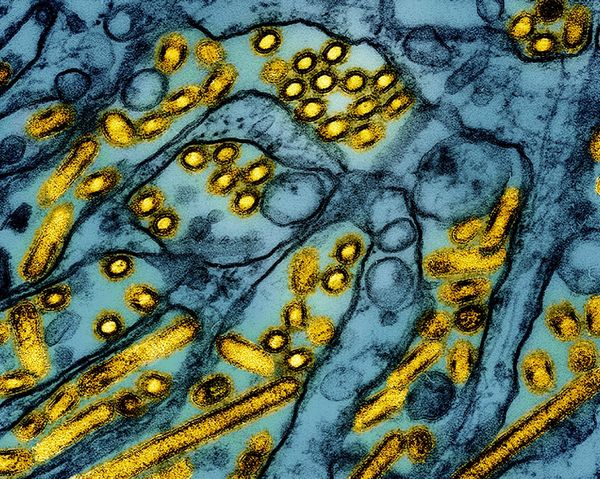It is 4:38 am here in the eastern United States, and I could not sleep. My 25 years of experience as a research meteorologist placed an uncomfortable feeling in my stomach as I monitored Hurricane Michael before going to bed. The hurricane rapidly intensified to a dangerous Category 4 storm. It is tracking toward the Florida Panhandle with plenty of warm water in its path before a Wednesday afternoon landfall. The National Weather Service (NWS) Tallahassee Office tweeted a warning that clearly articulates the dire nature of Hurricane Michael. The message reads,
Unprecedented Event Unfolding…We searched the historical database for category 4 hurricanes that have made landfall in the Florida panhandle and Big Bend. This map says it all – it’s BLANK – this situation has NEVER happened before.
The statement is true for the era of meteorological record keeping, but you get the point. Many meteorologists have been hinting that this storm had the potential of becoming a major hurricane. I wrote in Forbes on the reasons why on Monday. Other colleagues like Dr. Ryan Maue were sounding the alarm for a likely major storm. The National Hurricane Center discussions throughout the week also explicitly mentioned likely intensification to a major storm. However, the explosive growth to Category 4 has been meteorologically fascinating and tragically scary at the same time. The words “hot towers” have appeared in several discussions about Hurricane Michael. What are they and is this some new “buzzword?”

The answer is “no.” Before I discuss hot towers and their role in the intensification of Hurricane Michael, it is important to provide an update on the storm. The 4:00 am CDT National Hurricane Center update has the hurricane at 140 mph sustained winds and moving north at 13 mph. Specific wording in the public advisory warns:
Michael is an extremely dangerous category 4 hurricane on the Saffir-Simpson Hurricane Wind Scale. Some
additional strengthening is possible before landfall…Hurricane-force winds extend outward up to 45 miles (75 km) from the center and tropical-storm-force winds extend outward up to 185 miles (295 km)…The estimated minimum central pressure based on Hurricane Hunter aircraft data is 943 mb (27.85 inches).
Dr. Phillipe Pappin is a National Research Council Associate postdoctoral scientist at the U.S. Naval Research Laboratory and one of the best young atmospheric scientists around. He tweeted a satellite image (above) noting that the full ring of lightning around the eyewall probably indicates further strengthening. Pappin also tweeted something about hot towers on October 8th. He said, “the structure of #Hurricane #Michael continues to organize today. The storm is becoming axis-symmetric with dual hot towers recirculating around the vortex.” I noticed a several colleagues mentioning the term.

The term “hot towers” has been around for decades. My former NASA colleague and legendary tropical meteorologist Dr. Joanne Simpson discovered hot towers in the 1950s using radar imagery and photographs. According to a NASA press release in 2004,
When these tall clouds, called “hot towers,” are present, they double the chance that a hurricane will gather strength within hours…Warm air rises, and these towers are called “hot” because they rise very high due to a large amount of heat, called latent heat. Water vapor releases this latent heat as it condenses into liquid.
In a 2004 paper published in the American Geophysical Union journal Geophysical Research Letters, NASA researchers extended Dr. Simpson’s pioneering work. They found that a tropical cyclone with a hot tower is two times more likely to intensify in the next six hours as compared to a cyclone without one. In that study, a hot tower was defined as “an extremely tall convective tower as a convective cell with a 20 dBZ reflectivity signal that reaches an altitude of at least 14.5 km.” They used novel data from NASA’s Tropical Rainfall Measuring Mission (TRMM) satellite, which had a first-of-its-kind precipitation radar and other microwave instruments. The Global Precipitation Measurement (GPM) Mission is currently in orbit and has similar capabilities. I served as Deputy Project Scientist for GPM while at NASA.

Concerning Hurricane Michael, Dr. Pappin noticed the role of hot towers in the dramatic intensification of the storm. He told me in a message,
It seems like these features have been what has been driving a lot of the lightning we’ve seen in the inner core with Michael. The hot towers are associated with strong vertical motion that results in mixed phase hydrometers interacting and creating charge by bumping into each other.
Even as Hurricane Michael approaches land, Pappin pointed out that several rotating meso-vorticies, so called “vortical hot towers,” were evident within the eyewall. The storm is on final approach and is very strong. In fact, it is so strong that I fully expect it to be at hurricane strength well into Georgia after landfall. The latest National Hurricane Center track forecast (below) also points this out. I urge everyone in the affected Florida panhandle, southeast Alabama, and southern Georgia to treat this storm as if your life was at risk. I hate to sound that dire, but it would be irresponsible of me to soft peddle this threat.








